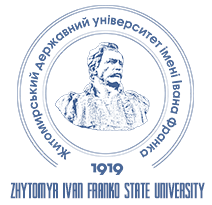THE USE OF DISTANCE LEARNING TECHNOLOGIES BY FOREIGN LANGUAGE TEACHERS
DOI:
https://doi.org/10.35433/pedagogy.1(108).2022.190-197Keywords:
distance technologies, distance learning, teachers, learning foreign languages, synchronous and asynchronous toolsAbstract
In the context of global changes in education in the context of the COVID-19 pandemic, the number and capabilities of distance technology, the availability of the Internet worldwide raises the importance of the issue of studying the use of distance technology in education, including foreign language learning. The paper finds that the distance learning process is carried out using a combination of synchronous and asynchronous tools, while maintaining flexibility and convenience and expanding the quality and efficiency of both methods of communication. The most effective forms of organizing foreign language classes with the use of distance technologies have been identified. Factors that should be taken into account when working with distance technologies in the process of learning a foreign language are identified: interface, the ability to present a variety of materials, including audio and video, presentations and links to useful Internet resources, automatic calculation of response statistics and activity monitoring. A brief description of some techniques and methods of teaching English remotely is given, their specificity is analyzed. The author also presents the main disadvantages and advantages of using distance technologies by teachers in the process of learning foreign languages, as well as outlines the prospects for their further effective use. It is emphasized that the advantages of distance learning technologies, such as the availability of materials, their ease of usage and the ability to manage the learning process are undeniable. It is stated that there are three main principles on which the distance education system is based: learn from native speakers, learn from authentic material, learn for free. The author also emphasizes that teacher’s feedback is an important factor in distance learning. It was found that a well-organized educational process using distance technologies can make learning a foreign language more effective and attractive to all motivated and modern people, regardless of their age, location and financial capabilities.
References
Vaskivska, H. (2020). Psykhodydaktychni osoblyvosti dystantsiinoho navchannia u suchasnykh kryzovykh umovakh [Psychodidactic features of distance learning in modern crisis conditions]. Aktualni problemy suchasnoi psykhodydaktyky: filosofski, psykholohichni ta pedahohichni aspekty – Actual problems of modern psychodidactics: philosophical, psychological and pedagogical aspects: mat-ly IV Mizhnar. nauk.-prakt. konf. Uman: Vizavi, 21-24 [in Ukrainian].
Shuliar, V.I., zah. red. (2020). Orhanizatsiia osvitnoho protsesu iz zastosuvanniam tekhnolohii dystantsiinoho navchannia u 2020/2021 navchalnomu rotsi [Organization of the educational process with the use of distance learing technology in the 2021 academic year]. Mykolaiv: OIPPO, 108 [in Ukrainian].
Adams, J. (2008). E-learning Offer Myriad Opportunities for Rapid Talent Development, 69-73. Retrieved from: http://yellowedge.files.wordpress.com/2008/03/adams.pdf [in English].
Gabriela, H. (2003). Classification and Sustainability Analysis of E-learning Applications. Universitat Hannover, 243 [in English].
Raheen, B. Distance Technology. Retrieved from: https://www.slideshare.net/Raheen26/distance-technology-71521020 [in English].
Sole, C.R., & Hopkins, J. (2007). Contrasting Two Approaches to Distance Language Learning. Distance Education, 28(3), 351-370 [in English].
Shemuda, M. (2018). Strtegies foe teaching gifted students English grammar. Advanced Education, 5, 107-113. Retrieved from: https://doi.org/10.20535/2410-8286.109786 [in English].
Downloads
Published
Issue
Section
License

This work is licensed under a Creative Commons Attribution-NonCommercial-NoDerivatives 4.0 International License.
Authors published in this journal agree to the following terms:
a) The authors reserve the right to author their work and grant the journal the right to first publish this work under the Creative Commons Attribution License, which allows others to freely distribute the published work with a mandatory link to the authors of the original work and the first publication of the work therein magazine.
b) Authors have the right to enter into separate additional agreements regarding the non-exclusive distribution of the work in the form in which it was published by this journal (for example, posting work in an electronic repository of the institution or publishing as part of a monograph), provided that the reference to the first publication of the work is maintained therein. magazine.
c) Journal policy permits and encourages the submission of manuscripts by the authors on the Internet (for example, in repositories of institutions or on personal websites), both prior to submitting this manuscript to the editorial board and as it contributes to the emergence of productive scientific discussion, and has a positive impact on the promptness and dynamics of citing a published work (see The Effect of Open Access).

 ISSN
ISSN 





